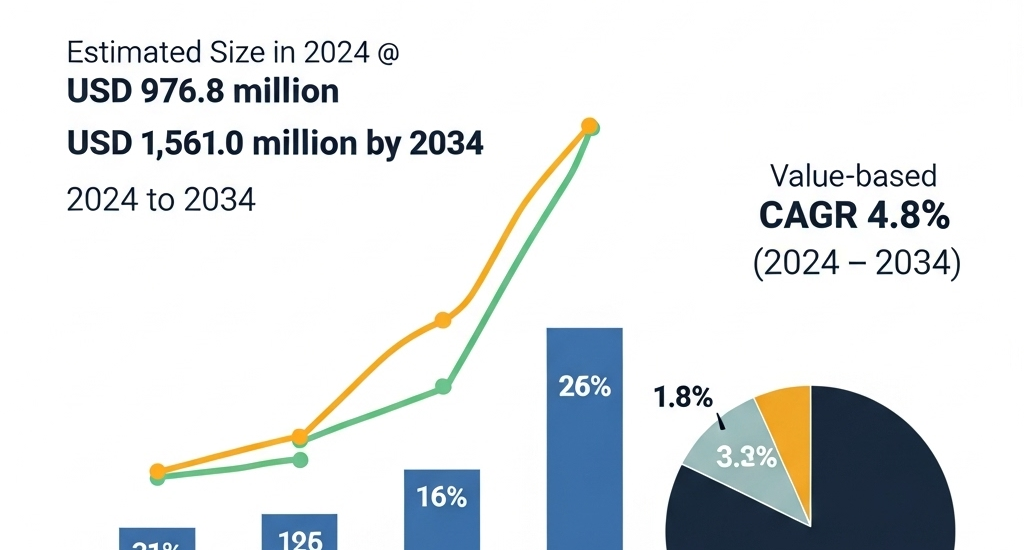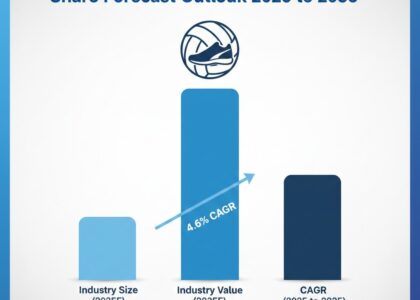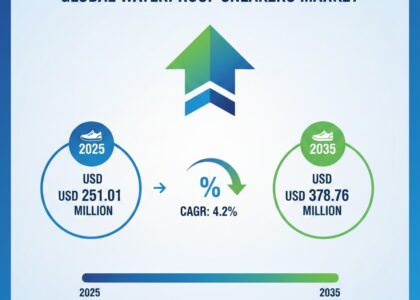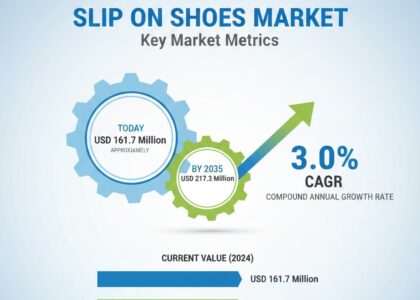The global sales of ophthalmic lasers are estimated to be worth USD 976.8 million in 2024 and are anticipated to reach a value of USD 1,561.0 million by 2034. Sales are projected to rise at a CAGR of 4.8% over the forecast period between 2024 and 2034. The revenue generated by ophthalmic lasers in 2023 was USD 932.1 million.
According to Future Market Insights, the global ophthalmic lasers market is poised for significant growth, powered by rising demand for minimally invasive surgeries and a surge in age-related eye disorders. That’s great. But here’s the part they don’t tell you: this booming sector is being built on a regulatory house of cards.
Get Sample Report: – https://www.futuremarketinsights.com/reports/sample/rep-gb-1529
The Global Explosion of Ophthalmic Lasers
Lasers have become indispensable in eye care. There’s no disputing that. They’ve revolutionized treatments for glaucoma, diabetic retinopathy, and secondary cataracts. Publications from trusted sources like IEEE have called lasers one of the “most remarkable clinical innovations” in ophthalmology. But that’s where the applause stops.
We’re not just talking about a few machines in top-tier hospitals anymore. We’re talking mass adoption, in clinics across developing nations, aesthetic centers, and private offices—some staffed by professionals with questionable training. Precision tools in untrained hands? That’s a recipe for disaster.
Safety Risks Are No Longer Theoretical
Let’s drop the polite language: lasers can maim. The U.S. Food & Drug Administration (FDA) knows it. OSHA knows it. Any clinician worth their salt knows it. Class IV surgical lasers can burn corneas, scar retinas, and cause permanent blindness—and that’s just on a good day when misused.
The FDA’s own guidance warns against buying laser devices off the internet, where many evade essential safety certifications. Yet they’re still being sold. Still being used. And still being marketed as “safe” without a single real-world trial or follow-up study. This isn’t innovation. It’s negligence dressed up as progress.
Clinical Advancement, Regulatory Stagnation
Femtosecond lasers, Nd:YAG, diode systems—every few months, there’s a newer, “smarter” laser on the market. But the regulatory framework? It’s stuck in 2003. Devices slip through under 510(k) clearances based on “substantial equivalence,” even if their real-world impact is wildly different.
Worse, there’s virtually no demand for long-term patient outcome studies. You read that right. For Class IV tools that reshape the structure of a human eye, most are approved without rigorous longitudinal testing. It’s madness.
A recent NCBI review made it clear: preclinical validation is critical. But in practice? Many devices go from prototype to patient without meaningful trials. That’s not medicine. That’s gambling—with someone else’s vision.
The American Blind Spot
Here in the U.S., the illusion of safety is worse than actual risk. Patients assume FDA approval means gold-standard oversight. It doesn’t. The FDA’s classification system recognizes surgical lasers as high-risk. And yet, low enforcement rates, patchy inspections, and poor post-market surveillance create massive blind spots.
And who’s paying the price? Not the manufacturers. Not the regulators. The patient is.
In underserved communities, the problem is magnified. Cheaper devices with dubious sourcing are becoming the default. Some providers are unaware of their equipment’s origin or lack of calibration. Others know and choose cost savings over safety. That’s malpractice hiding behind economics.
What Needs to Happen—Now
This is not a call for cautious optimism. It’s a demand for regulatory sanity. If the ophthalmic laser market wants to grow, it must grow responsibly.
Click Here to Purchase the Report:- https://www.futuremarketinsights.com/checkout/1529
Here’s what must happen—no excuses:
- Mandatory certification and training for all laser operators. Anything less is dangerous.
- Ban the online sale of surgical lasers. Period. No gray areas. No “buyer beware.”
- Publicly accessible safety records and incident reports. We do it for food. We do it for planes. Why not for high-risk medical lasers?
- No more shortcuts via 510(k). New lasers need new clinical trials. Full stop.
Key Segments of the Ophthalmic Lasers Industry
By Product:
In terms of product, the industry is divided into excimer lasers and femtosecond laser.
By Application:
In terms of Application, the industry is divided into refractive surgery, cataract surgery, posterior capsulotomy, trabeculoplasty, and diagnostic.
By End User:
In terms of End Users, the industry is divided into hospitals (500 Bedded+, 250-499 Bedded, and Less than 250), ambulatory surgical centers, and ophthalmology clinics.
By Region:
Key countries of North America, Latin America, Europe, East Asia, South Asia & Pacific, Middle East and Africa (MEA) have been covered in the report.
About Future Market Insights (FMI)
Future Market Insights, Inc. (ESOMAR certified, recipient of the Stevie Award, and a member of the Greater New York Chamber of Commerce) offers profound insights into the driving factors that are boosting demand in the market. FMI stands as the leading global provider of market intelligence, advisory services, consulting, and events for the Packaging, Food and Beverage, Consumer Technology, Healthcare, Industrial, and Chemicals markets. With a vast team of over 400 analysts worldwide, FMI provides global, regional, and local expertise on diverse domains and industry trends across more than 110 countries.
Contact Us:
Future Market Insights Inc.
Christiana Corporate, 200 Continental Drive,
Suite 401, Newark, Delaware – 19713, USA
T: +1-347-918-3531
For Sales Enquiries: sales@futuremarketinsights.com
Website: https://www.futuremarketinsights.com
LinkedIn| Twitter| Blogs | YouTube






